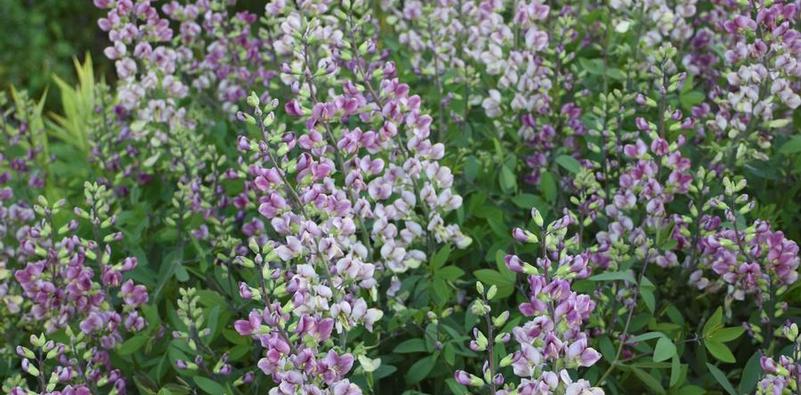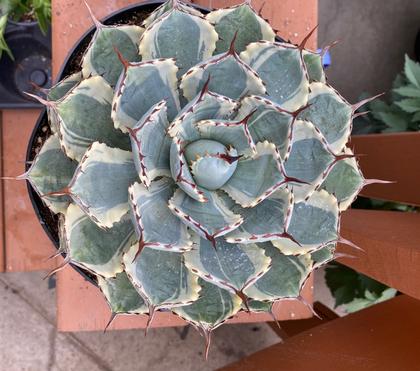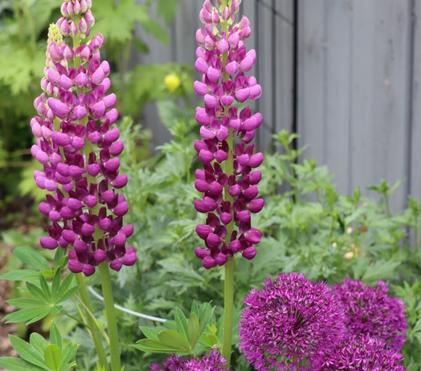Drought Tolerant Perennials
As weather patterns change, it may be worth considering how you can adapt your garden to survive hotter and drier spells without having to water frequently. A good way to begin is by building healthy soil that retains moisture and layering mulch on the surface to keep that precious moisture from evaporating. The next step is to select plants adapted to withstand long, dry periods.

Drought Tolerant Perennials
Many people, if asked to identify a drought-tolerant plant would probably say a cactus and assume that they only grow as houseplants here. Fun fact: at least one species of prickly pear cacti is native to Alberta, and the Gibbons Badlands just north of Edmonton is a good place to see them in bloom around this time of year. Native cacti are beautiful and can successfully be grown in home gardens, especially in those very hot dry locations where nothing else grows, but they should be sourced from a reputable native plant grower and never collected from the wild.
Cacti are not the only plants suitable for a drought tolerant, or xeriscape, garden. If you do a search on the Wallish Greenhouses website using the term “drought tolerant” you will get a list of more than fifty species of annuals and perennials classified as drought tolerant. Any plant that is identified as such will have varying degrees of tolerance to dry conditions, so as always, it is important to ensure that the plants you choose are suitable for the normal growing conditions in your garden. A healthy plant can tolerate a period of drought far better than one that is already stressed.
Plants can lose a significant amount of moisture due to transpiration during hot, dry weather. This occurs when the stomata, or pores, on the leaves open to take in carbon dioxide and sunlight for photosynthesis. As the stomata open, water evaporates. Most plants undergo this process during daylight hours.
Plants in the Crassulaceae family do things a little differently. These are the sedums, stonecrops, and sempervivums. They keep their stomata closed during the day and open them in the cool of night to take in carbon dioxide. The stored carbon dioxide is then photosynthesized during daylight hours. Their fleshy leaves, stems, and roots also store moisture much as cacti do, and in severe drought conditions may shrivel up only to fill out again once the rains come.
Specific leaf forms and appearance are the most visible moisture retention indicators of drought-tolerant plants. The silvery hairs on plants such as artemisia, lamb’s ears, and pussytoes prevent significant moisture loss by regulating the temperature around the leaves. Plants with many small, narrow, needle-like, or multi-lobed leaves are also likely tolerant of hot, dry conditions because the smaller surface areas allow for adequate photosynthesis while keeping moisture loss to a minimum. Thymes, creeping phlox, and coreopsis are examples of drought-tolerant plants with these characteristics. Shiny, leathery, or waxy leaves are another tactic plants use to retain moisture. The thick tough epidermis layer holds moisture in, and the shine reflects heat away from the leaf. The leaves of native kinnikinnick are a good example of this adaptation.
And then there are the roots – hidden, but ever so important. These amazing structures go deep and wide below the surface, extracting moisture and nutrients from the tiniest of soil particles. Some plants, especially native perennials, can take two or three years to mature before flowering. The foliage remains short, perhaps 10 cm (4 inches) high in the first year or two, but if you were to dig a plant up, you would find a surprisingly extensive fibrous root system or tap root reaching 40 cm (16 inches) down into the soil. Cultivated perennials may bloom much sooner and appear to be deceptively well established soon after planting, but their root systems need time to grow deep into the soil before the plant is resilient enough to withstand very dry conditions. That’s why it is important to water regularly – once a week, deeply - the first year after planting. Gaillardia, baptisia and sea holly are all examples of plants with long tap roots that grow deep into the soil. Grasses are another great drought-tolerant option as their fibrous root systems can go very deep into the soil.
Plants are resilient, and many have adapted to survive natural drought conditions. If you don’t have a lot of specifically drought-resistant plants in your garden, you can help those that require moister conditions to adapt. Build good healthy soil that will retain moisture, use mulch, and water less frequently. Infrequent watering will encourage the roots to go deeper in search of moisture, and this will hold them in good stead when the dry times come.

